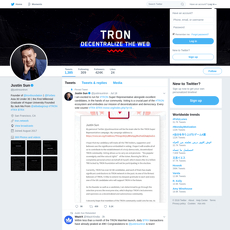Tyler Winklevoss Review
Tyler Winklevoss
x.com
Tyler Winklevoss on X (Twitter) Review: Is Following @tyler Worth It?
Is following @tyler actually worth your time, or is it just another loud voice in a crowded crypto feed?
If you care about Bitcoin, regulation, and what a well-known exchange founder is thinking in real time, this is for you. I spent time tracking his posts, cross-checking claims, and mapping where his feed is high-signal—and where you’ll want to keep your filters on.
Why crypto X can waste your time (and how that shows up around @tyler)
Crypto X is loud. It’s a mix of hype, political hot takes, and bot-fueled engagement traps. Add fake “Tyler” accounts pushing giveaways and you’ve got risk on top of noise.
- Impersonation is a real problem: When paid verification rolled out, fake “blue checks” caused chaos across X—well documented by tech media. Scammers still impersonate high-profile crypto figures.
- Scam magnets: The U.S. FTC has warned that social-media-based crypto scams are rampant. Any “giveaway” or “send crypto and we’ll double it” using a big name is a hard no.
- Signal vs. self-promo: Founders naturally promote their companies. That’s not a bad thing—just know when a post is an insight and when it’s brand-aligned positioning.
- Hot takes ≠ actionable info: Policy and macro commentary can move sentiment, but it’s not a trading signal without data or corroboration.
Best practice: treat X as an early alert system, not a final source. Use it to spot themes, then verify using filings, reputable media, or official releases.
Here’s my promise to you
I’ll keep this simple and practical. You’ll get a crisp snapshot of who Tyler is, how he posts, and where his feed shines. Then I’ll show you how to filter, verify, and use his updates without falling for noise or bias.
Who is Tyler Winklevoss in 30 seconds
- Co-founder of Gemini, a U.S.-based crypto exchange and custodian.
- Co-founder of Winklevoss Capital, investing across crypto and tech.
- Early Bitcoin advocate and public voice for BTC as a store of value.
- Former Olympian (rowing, Beijing 2008).
- Known from the Facebook settlement, later channeled into crypto investing and entrepreneurship.
Translation: he posts from a founder–investor lens with a strong Bitcoin-first worldview, and his commentary often intersects with policy, institutions, and exchange infrastructure.
What I checked (so you don’t have to)
- Post themes: Bitcoin advocacy, U.S. regulation/policy, ETF/institutional adoption, Gemini updates, culture and motivation.
- Frequency and timing: Spikes around market moves, policy news, and company milestones.
- Engagement quality: Who interacts (builders, investors, media), not just how many likes.
- Past calls and stances: Consistency on pro-Bitcoin policy; long-term BTC thesis has aged well.
- Disclosures and links: How often he cites official docs, filings, or primary sources.
- Potential conflicts: Posts that align with Gemini’s business interests (expected from any founder account).
Quick verdict (spoiler)
- High signal on Bitcoin policy and industry sentiment—especially when U.S. regulation or ETFs are in focus.
- Useful for real-time context on exchange ecosystem news and Gemini product/security updates.
- Some self-promo and political takes—normal for a founder account. Filter with intent and verify anything actionable.
- Worth following if you care about policy, institutions, or the founder perspective behind a major exchange; just keep your scam radar on and your fact-checking tight.
Curious what you’ll actually see in your feed the minute you hit “Follow”? Let’s pull back the curtain on the real content patterns next—so you know exactly what to expect and how to use it.
Tyler on X: what you actually see when you follow @tyler
Open Tyler’s feed and you’ll feel like you’ve walked into a founder’s war room: Bitcoin-first energy, policy heat, and exchange-side perspective packaged for a mainstream X audience. If you care about what’s shaping U.S. crypto, this is one of those streams that can move your day.
“Follow the signal. Ignore the noise.”
That’s the game here—because when markets run on headlines, finding the signal is half the alpha.
Bio snapshot
His bio isn’t long, but it sets the frame: co-founder of Gemini, investor at Winklevoss Capital, Olympian. The lens is unmistakable—builder, operator, and early Bitcoin advocate. In practice that means:
- Founder POV: policy, compliance, security, product updates.
- Bitcoin-first bias: store-of-value, self-custody, institutional on-ramps.
- U.S.-centric: Congress, SEC, state-level progress—sprinkled with global notes when they set precedent.
Core themes of his posts
If you follow @tyler for a month, patterns jump out. Here’s what shows up most—and what it looks like on your timeline.
Bitcoin as freedom and store-of-value
What you’ll see: posts framing Bitcoin as monetary independence, commentary on inflation and fiat dilution, pushback on recurring “Bitcoin is dead” media cycles, and enthusiasm around adoption touchpoints (halvings, corporate treasuries, ETF inflows). Expect simple, repeatable narratives that resonate with newcomers and veterans alike.
Why it matters: It sets long-term sentiment. During events like the 2024 halving and spot ETF approvals, these posts track mainstream acceptance and can shift risk appetite.
Policy and regulatory fairness
What you’ll see: sharp takes on rulemaking, agency overreach, and the need for clear frameworks. He frequently amplifies lawmakers and bills aligned with crypto (e.g., progress around FIT21: H.R. 4763), and flags court milestones that affect exchanges and token classification.
Why it matters: Policy is a live catalyst. Research in market microstructure shows regulatory news can drive abnormal returns and volume around event windows; for crypto, that’s doubly true when agencies or Congress move. His feed helps you spot those windows early.
Market maturity: ETFs and institutions
What you’ll see: celebration of spot Bitcoin ETF milestones, nods to inflow/volume stats, and commentary on why retirement accounts and RIAs matter. You’ll also catch quotes or retweets from issuers, analysts, and financial media on adoption and distribution (think wirehouse access, 401(k) rails).
Why it matters: ETF adoption isn’t a headline—it's a distribution machine. Posts that highlight net inflows or new platforms enabling allocations help frame the demand side.
Gemini milestones and ecosystem
What you’ll see: exchange updates (geographic expansion, product tweaks, custody/security notes), strategic partnerships, and platform-wide notices. He keeps these crisp and typically ties them back to trust and compliance.
Why it matters: If you use Gemini or track exchange competition, these posts function like a changelog you didn’t have to dig for.
Pro-innovation policy support
What you’ll see: endorsements of pro-crypto positions, calls for entrepreneurship-friendly regulation, and occasional clapbacks at narratives he views as anti-innovation.
Why it matters: Culture sets the Overton window. When industry leaders normalize certain ideas (self-custody rights, developer protections, ETF access), it shapes what policymakers think is mainstream.
One useful note: he often links to official sources—agency releases, legislation pages, or company posts—rather than third-hand threads. That habit is gold. A landmark Science study (Vosoughi, Roy, Aral, 2018) showed false news spreads faster on Twitter than true news; sticking to primary links is how you avoid the hype trap.
Posting cadence and tone
- Cadence: steady most weeks, with spikes around market movers (ETF rulings, Bitcoin price breaks), policy events (hearings, bill votes), and Gemini news. Expect bursts when narratives heat up.
- Tone: confident and rallying when it’s about Bitcoin or adoption; sharper and sometimes combative on regulatory friction. He writes for reach, not just insiders—short, shareable, and designed for “quote-and-go.”
- Format mix: headline takes, short threads for context, retweets of official documents or issuer stats, and the occasional meme to keep things human.
If you’re holding through volatility, these bursts can feel like a shot of espresso—part morale, part map.
Who gets the most value
- Bitcoin holders: clean, repeatable theses you can use to explain BTC to friends, colleagues, or skeptical CFOs.
- Founders and operators: a pulse on policy risk and how a regulated exchange communicates with users, regulators, and media.
- Policy watchers and analysts: quick pointers to primary docs, bill progress, and influential voices in the D.C. orbit.
- Institutional-curious investors: breadcrumbs on ETF distribution, custody signals, and mainstream adoption narratives.
I keep a mental checklist when I’m scrolling his posts: Is this a policy catalyst? A sentiment cue? Or a product signal? Once you bucket it, the feed becomes actionable instead of just interesting.
Of course, there’s a catch. When a founder posts, you’re getting insight and incentive in the same package. Which parts are pure signal—and which are strategic? I’ll unpack that next, with receipts you can verify in minutes. Ready?
Reliability check: signal vs. self‑promo
Tyler Winklevoss’s X feed sits at the intersection of conviction and interest. You’ll get real insights on Bitcoin, regulation, and market structure—but you’re also hearing a founder with a brand to protect and a company to grow. Here’s how I separate the signal from the self-promo, with receipts you can click and tools you can use.
“Skin in the game cuts both ways: it builds conviction and bias at the same time.”
Track record and receipts
Credit where it’s due: Tyler was early, public, and consistent on Bitcoin.
- Early Bitcoin thesis: The Winklevoss brothers filed the first Bitcoin ETF proposal in 2013—long before institutions touched BTC. See the original SEC S-1 for the Winklevoss Bitcoin Trust: SEC.gov filing (2013). That “Bitcoin as Gold 2.0” thesis aged remarkably well as BTC became a mainstream macro asset by 2020–2024.
- Clear, long-horizon calls: The 2020 piece “The Case for $500K Bitcoin” laid out a monetary debasement argument and institutional adoption path that we’ve watched play out directionally, even if timelines stretch. Worth a read for context: Winklevoss Capital: The Case for $500K Bitcoin.
- Policy consistency: He has stayed pro-Bitcoin and pro-clear rules, supporting milestones like spot Bitcoin ETFs and pushing back on what he frames as regulation-by-enforcement. When he shares primary-source links (SEC rulings, agency statements, bills), those are the posts to prioritize.
- Engagement tends to map to catalysts: Expect spikes around ETF news, enforcement actions, or Gemini updates. Academic and industry research has found that crypto social sentiment correlates with short-term volatility—so a surge in attention can matter for traders, independent of agreement. See examples: arXiv: Twitter sentiment and Bitcoin and SSRN: Influencer impact on crypto markets.
Quick rule I use: if a post includes a primary source (SEC link, official blog, lawmaker PDF), it’s likely higher signal. If it’s purely motivational or dunking on opponents, useful for sentiment—less useful for action.
Conflicts of interest to keep in mind
None of this is hidden, but it’s easy to forget in the moment:
- Exchange incentives: As co-founder of Gemini, posts may support products, campaigns, or legal positions that benefit the exchange or its users. That doesn’t make them wrong; it means they’re not neutral.
- Investor lens: Through Winklevoss Capital, he’s invested in crypto companies and funds. Portfolio ties can influence which narratives get amplified. You can browse holdings here: Winklevoss Capital Portfolio.
- Bitcoin bag bias: A significant BTC position means macro takes often trend bullish. Expect “store-of-value” framing and policy advocacy that favors Bitcoin’s role in the financial system.
None of this is unusual—most founder-voices carry brand and portfolio gravity. It’s just smart to factor it into how you weigh any post.
Controversies you should know
Context matters, especially when posts frame ongoing disputes.
- Gemini Earn and Genesis/DCG: After Genesis halted withdrawals in November 2022, Gemini’s Earn program froze. The SEC then charged Genesis and Gemini in January 2023 for offering unregistered securities via Earn. Read the official release: SEC Press Release 2023-7. Tyler’s posts generally argue Gemini fought to recover funds for users and push accountability upstream to Genesis/DCG.
- NY Attorney General suit: In October 2023, the NYAG alleged fraud involving DCG, Genesis, and Gemini, later expanding the scope. Official page: NYAG press release. Expect Tyler’s framing to emphasize Gemini’s recovery efforts and counterclaims.
- Regulatory actions and settlements: There have been penalties and regulatory outcomes tied to Earn and compliance oversight. For Gemini’s official stance and user-facing updates, check the Gemini Blog and Status Page for time-stamped posts rather than relying on social summaries.
When controversies surface, I treat Tyler’s feed as one side of the story, then look for the matching filings or agency releases before I weigh in.
How I verify his claims
Here’s the simple, fast workflow I use before acting on anything he posts:
- Find the primary source:
- Regulation/policy: SEC EDGAR, SEC Press Room, CFTC Press, NYDFS Press, and bill text on Congress.gov.
- Court/litigation: public dockets via CourtListener or agency complaints.
- Cross-check product claims: Compare posts to the official Gemini blog and status.gemini.com for release notes, outages, and incident timelines.
- Validate market stats: For on-chain and ETF-related numbers, I use:
- Coin Metrics Charts for network data
- Glassnode or Messari for flows and metrics
- BlackRock iShares IBIT page and other ETF provider pages for official flow/holdings
- Farside Investors: Bitcoin ETF Flow for consolidated daily estimates
- Quote-check on X: Use Advanced Search to see the original post and context: from:tyler bitcoin. Screenshots circulate—timestamps don’t lie.
- Keep emotion in check: If a post makes you feel urgent, step back. Urgency is a feature, not a bug, on social. I never place a trade or move funds until the primary source is in hand.
If you’ve ever felt the rush from a viral post and acted too fast, you’re not alone. The cure is boring: links, timestamps, and cross-checks.
Ready to turn his feed into a high-signal stream without living on X? Next up, I’ll show the exact filters, lists, and alerts I use so the good stuff finds you first. Which would save you more time—smart notifications or a one-click “policy radar” list?
How to get the most value from following @tyler
X can feel like a firehose. The trick is turning Tyler Winklevoss’s feed into a clean, fast signal you can actually use for decisions—without getting pulled into the scroll.
“Filter ruthlessly. Verify twice. Act rarely.”
Set up smart follows
Start with a focused List so you see context around his posts—policy, founders, and official statements in one lane. Lists beat the algorithm and cut noise. (Pew Research has noted that a small share of users produces the majority of posts, which can distort what shows up in your main timeline.)
- Create a List: Name it “Policy & Founders.” Keep it private so your follow graph doesn’t get messy. How-to: Lists on X.
- Add @tyler and context accounts:
- Official: @Gemini, @cameron
- Policy/regulators: @SECGov, @HesterPeirce, @CoinCenter, @jchervinsky
- Journalists/analysts: @laurashin, @matthew_pines, @ericbalchunas (ETF coverage)
- View the List on “Latest,” not “For you.” You’ll get chronological updates when policy moves, ETFs file changes, or Gemini drops news.
Pro context: a well-known study in Science found false news travels faster than true news on social platforms—so building a list of reliable sources is more than a convenience; it’s a safety net. Source: Vosoughi et al., 2018.
Pro tips for signal
Cut straight to his highest-value posts with a few simple habits:
- Turn on notifications for Tweets only: On @tyler’s profile, tap the bell → choose Tweets (not “Tweets & replies”). You’ll get the big takes without reply threads flooding your phone.
- Use Advanced Search like a pro: Bookmark these and open when markets move:
- X Advanced Search reference
- Policy-only links:from:tyler filter:links (ETF OR SEC OR policy)
- Bitcoin thesis highlights:from:tyler bitcoin -filter:replies
- Official-docs only:from:tyler (url:sec.gov OR url:gemini.com)
- High-engagement filter:from:tyler min_faves:500 -filter:replies
- Historical stance check:from:tyler bitcoin since:2020-01-01 until:2022-12-31
- Save threads where it counts: Tap “Bookmark” for deep policy threads and batch-read later. If you want a clean reading flow, unroll with Thread Reader or pipe links into Readwise Reader for highlights.
- Cross-check claims fast: If a post references filings, open a new tab to SEC EDGAR, Gemini’s official blog, or ETF provider pages to confirm details before you act.
Safety first: avoid fakes and scams
High-profile names attract impostors. A few seconds of verification can save you a portfolio-sized headache.
- Check the handle: It’s exactly @tyler. Look for the verified check, a long posting history, and consistent links to Gemini.
- Spot impersonators: Scammers use lookalike characters (e.g., Tylеr with a Cyrillic “e”). Click through to the profile—thin history or aggressive promo is a giveaway.
- Ignore “giveaways” and “airdrops.” Tyler doesn’t ask you to send crypto or connect a wallet. If a post asks for seed phrases, QR scans, or “gas to verify,” it’s a scam.
- Verify via cross-links: When in doubt, check @Gemini’s profile/bio for the correct link back to @tyler or find him via the company site.
- Harden your security:
- Use app-based 2FA (Authy, Google Authenticator), not SMS.
- Never connect a wallet or sign a transaction from a random X link.
- On exchanges, enable withdrawal allowlists so funds can only go to approved addresses.
- Report and move on: If you see a fake @tyler, report for impersonation and block. Don’t argue in replies—scammers love visibility.
Time-saving hacks
If you only have 10 minutes a day, here’s how to get the most important updates without the drain:
- Mute the fluff: Settings → Privacy and safety → Mute and block → Muted words. Add noisy/repetitive terms so you still see serious posts. Example list: giveaway, airdrop, “free bitcoin”, gm, wen.
- Use X Pro (TweetDeck) columns: Create a column for from:tyler (ETF OR SEC OR policy OR Gemini) -filter:replies filter:links and turn on desktop notifications for that single column. It’s the closest thing to keyword alerts that actually works on X today.
- Pin saved searches: Save the Advanced Search queries above. Open them during macro events (CPI, FOMC), SEC deadlines, or big Bitcoin moves to catch Tyler’s take quickly.
- Batch your reading: Bookmark anything longer than 30 seconds. Review your Bookmarks once daily, clear what’s stale, file what matters into your notes.
- Quick context, zero rabbit holes: When he references filings, jump straight to primary sources (e.g., sec.gov) instead of quote tweets. You’ll save time and avoid second-hand spin.
Want to know which of his post types are worth acting on—and which ones are just good for morale? Up next, I’ll break down the typical categories you’ll see from @tyler and exactly how to read each one without second-guessing. Which type do you think moves markets most often?
Typical posts and what they mean for you
When his handle lights up, I don’t just read; I translate. Here’s how I categorize the updates you’ll see and the smartest way to react to each—so you catch the signal, not the noise.
Bitcoin advocacy and macro
Expect rallying posts about Bitcoin as freedom tech, store-of-value arguments, and notes on big macro moments: CPI prints, Fed meetings, ETF flows, and the halving. You’ll also see institutional adoption framed as a long-term tailwind.
What that means for you:
- Treat it as a sentiment gauge. Advocacy posts often align with positive inflow days for spot Bitcoin ETFs and strong risk appetite. Early 2024 was a perfect example: US spot ETFs amassed tens of billions in assets within months, underscoring the “institutions are here” narrative (you can sanity-check via CoinShares weekly flow reports and issuer pages like iShares).
- Look for macro hooks. If a post lands around CPI/FOMC days, I mark it as “narrative fuel,” not price guidance. A flurry of retweets about disinflation or rate cuts can foreshadow risk-on positioning—use it to time research, not market orders.
- Cross-check with hard data. ETF net flows, futures open interest on CME, and stablecoin market cap trends round out the picture. Narrative + flows = a sturdier signal than narrative alone.
Sample pattern I’ve seen: he amplifies “Bitcoin as a hedge” on days when ETF inflows are strong and the dollar is wobbly. That combo tends to lift sentiment across the board. Research backs the social-to-market link: social activity often precedes crypto volatility and volume (Garcia et al., Scientific Reports).
“Trust, but verify.”
That’s my rule here: get inspired by the thesis, then verify with flow and macro data before acting.
Policy and regulation
You’ll see commentary on US agencies, Congress, and global frameworks (think EU MiCA, ETF decisions, stablecoin rules). Posts can be sharp, especially when he believes policy is stifling innovation.
What that means for you:
- Treat it as a heads-up, not the final word. If he flags a bill moving forward or an agency action, great—now pull the primary text or the official release to confirm specifics and timelines.
- Watch key phrases. “Comment period,” “consent order,” “no-action,” and “effective date” are the difference between hype and impact. Mark calendars accordingly.
- Traders and founders: regulatory clarity (or chaos) moves liquidity. Posts applauding progress on ETFs or market structure can align with higher institutional participation; posts warning about enforcement risk can hint at rotation to assets with lower US exposure.
Real-world translation: when he celebrated spot ETF approvals, that was a regime-change signal for market structure. When he pushes for clear rules, I log it as a medium-term thesis—policy shifts reshape listings, custody, and banking rails, but not overnight.
Gemini announcements and ecosystem
Expect product updates, market expansions, security notes, and partnership news. These are founder-perspective posts, so they come with insight—and an obvious incentive to highlight wins.
What that means for you:
- If you use Gemini: treat any security or account notice as high priority. Confirm via the official Gemini Blog and Status Page before changing settings or sending funds.
- Product and listing news: these can shift liquidity on smaller assets, but Gemini’s listings are generally conservative. If he touts a new feature (like improved custody or payments support), it’s more about user experience and compliance than a trading catalyst.
- Partnerships and coverage expansions: useful signal for where regulated on-ramps are strengthening. Builders should note which jurisdictions are opening doors—it can guide hiring, licensing, and banking conversations.
One pattern I watch: security-focused posts. When he underscores audits, SOC reports, or operational resilience, that’s a nudge to double-check your own OPSEC—fresh 2FA backups, withdrawal allowlists, and an updated custody plan.
Culture, memes, and motivation
Memes about fiat money printing, freedom, and “number go up” are part of the package. They rally the base and boost engagement. Emotionally, they keep people anchored to the long game—and that matters more than most admit.
What that means for you:
- Great for morale, not for market orders. Still, a surge in culture posts often coincides with retail attention spikes. Multiple studies have linked social sentiment to short-term crypto volatility and volume (Mai et al., SSRN; Phillips & Gorse).
- Use as an early-warning radar. If meme frequency jumps while on-chain activity and ETF flows rise, that’s a risk-on cocktail. If memes surge but flows are flat, I tag it “sentiment ahead of substance.”
- Protect your attention. Enjoy the motivation, then zoom out to the hard numbers. Feel the energy, keep the discipline.
When a founder leans into culture, it’s not fluff—it’s community maintenance. But the market pays you for process, not vibes.
Want the exact links and tools I use to verify these posts in under 60 seconds—and a few balanced voices to keep you out of an echo chamber? That’s coming up next.
Helpful links, tools, and alternatives
If you’re going to follow @tyler for takes on Bitcoin, policy, and Gemini, give yourself a “truth rig.” Here’s exactly where I double-check claims, pull context fast, and keep my feed balanced.
Official and adjacent accounts
- Gemini: x.com/Gemini — product launches, legal statements, and security notices. If a post could affect your funds or account, confirm it here.
- Cameron Winklevoss: x.com/cameron — complementary perspective and occasional company or policy alignment with Tyler’s posts.
- Gemini Blog: gemini.com/blog — formal posts with dates, authors, and links. When a thread goes viral, check if there’s a blog post you can cite.
- Gemini Support: support.gemini.com — real policy, fee, and feature details. Also helpful for spotting fake support replies on X.
- Gemini Status: status.gemini.com — use this if a post hints at high traffic, maintenance, or a spike in new signups.
- Winklevoss Capital: x.com/winklevosscap — portfolio signals and where capital is flowing in their world.
Quick example: if @tyler teases a new Gemini feature, look for the matching blog post and status page. Marketing tweets move fast; official docs are what you can quote.
Third-party verification tools
Policy, filings, and legal
- SEC EDGAR — 8-Ks, S-1s, and enforcement docs. If he comments on an SEC action, this is “source of truth.”
- SEC Press Releases and CFTC Press — see the exact language regulators used.
- CourtListener and PACER — dockets and filings. For Gemini/Genesis/DCG context, primary docs beat commentary.
- Kroll (Genesis case) — restructuring notices and court materials tied to the Genesis bankruptcy.
- Reuters Crypto and Bloomberg Crypto — fast, well-sourced summaries if you don’t have time to read filings end-to-end.
- Congress.gov and GovTrack — bill texts, sponsors, and status. Handy when he flags new crypto legislation.
ETF and market confirmation
- Farside Investors: Bitcoin ETF Flows — clean daily inflow/outflow tracker. If you see “record inflows,” verify here.
- SoSoValue: Spot BTC ETF Dashboard — cross-check totals and holdings by issuer.
- @EricBalchunas and @JSeyff — Bloomberg’s ETF team; they often post receipts with charts and filings.
- TradingView — sanity-check price context around any market take in seconds.
- CoinGecko — quick liquidity, volume, and market cap checks, especially when altcoins get mentioned.
On-chain and network data
- Glassnode Studio and Coin Metrics Charts — supply, flows, and network health. Good for separating macro claims from memetics.
- mempool.space — fees, mempool backlog, and hashrate stats if a post references network congestion or miner dynamics.
- Kaiko and Messari — deeper market structure and research when something deserves more than a skim.
Media, research, and context
- CoinDesk, The Block, Decrypt — useful for summaries, interviews, and follow-ups that add color to a thread.
- Reuters Institute Digital News Report 2024 — broad signal on platform news trust. Helpful reminder to validate before acting.
- Pew: News on X — outlines how people use X for news and the limits of perceived accuracy.
- Chainalysis Crypto Crime Report 2024 — data on scams and illicit flows; reinforces why you should ignore “giveaways” and always verify links.
Safety and source hygiene
- urlscan.io and VirusTotal — scan suspicious URLs before you click.
- Wayback Machine — check edits or vanished announcements if a post disappears.
- @BitMEXResearch — strong habit of sharing raw data and primary sources when big claims circulate.
“Trust, then verify.” If a claim could change your portfolio or behavior, click through to the primary doc, not a screenshot.
Real sample workflow: if @tyler says spot ETF flows are accelerating, I pull up Farside to confirm the daily totals, check @EricBalchunas or @JSeyff for commentary, and glance at TradingView to see whether price movement matches the narrative. If he references a regulatory action, I read the SEC press release, then scan EDGAR or CourtListener for the filing. Two minutes, zero guesswork.
Alternative voices for balance
- Policy and legal: @HesterPeirce, @jchervinsky, @coincenter, @EleanorTerrett
- ETF and market structure: @EricBalchunas, @JSeyff, @coinmetrics, @KaikoData
- Founders and exchanges: @brian_armstrong, @jespow, @RichardTeng
- Macro and investing: @LynAldenContact, @michael_saylor, @novogratz
- Skeptics and auditors: @molly0xFFF, @BennettTomlin, @nic__carter (energy/data threads)
- Journalists and storytellers: @laurashin, @CoinDesk, @TheBlock__, @DecryptMedia
With these tools and voices in your corner, @tyler’s posts turn from hot takes into actionable intel. Want the quick answers everyone always asks—plus my bottom-line on whether he’s worth your follow? That’s up next.
FAQ and final take: is @tyler worth your follow?
If you care about Bitcoin’s policy path, institutional adoption, and what a U.S. exchange founder is signaling, following @tyler can be genuinely useful—provided you keep your filters on. Quick answers below, then my verdict.
How much is Tyler Winklevoss worth?
Reported net worth: roughly $4.4 billion (2025). Treat any figure as a moving target since it’s tied to crypto markets and private holdings. For context, outlets like Forbes update estimates based on market conditions and public disclosures.
How do I contact Tyler Winklevoss?
Email: [email protected] (publicly listed). For account-specific help, use Gemini Support—it’s faster and safer. If you’re reaching out on X, tag @tyler in a clear, concise post. Be wary of imposters; ignore any DMs asking you to send crypto or share seed phrases.
What’s his stance and does he share price targets?
He’s consistently pro-Bitcoin, pro-innovation, and vocal about what he sees as fair regulation and open markets. Don’t expect day-trading calls or hard price targets—he tends to post thesis-driven commentary rather than “buy/sell” signals.
Is @tyler useful for traders or just background noise?
He’s most useful for policy, sentiment, and exchange ecosystem signals. For example, around the January 2024 spot Bitcoin ETF approvals, his feed amplified key milestones and sentiment that lined up with real-world flows into the ETFs (you can cross-check daily flows here: Farside ETF Flow Tracker). That kind of context helps traders gauge narrative momentum—even if it’s not a direct trade setup.
Does following him actually move the needle for decisions?
It can, if you pair it with verification. There’s solid evidence that crypto markets react to social and attention signals:
- Research has linked social media sentiment to short-term Bitcoin moves (e.g., Stenqvist & Lönnö, 2017; Mai et al., 2018).
- Attention spikes (Google Trends, Wikipedia views, news) often correlate with price and volatility (Kristoufek, 2014).
The takeaway: an influential account like @tyler can flag narrative shifts early, but you should always cross-check data and never trade a tweet blindly.
What types of posts should I act on vs. ignore?
- Act on: links to official filings, court documents, ETF provider pages, security notices, or posts that include verifiable sources.
- Consider, then verify: policy takes, industry predictions, and exchange ecosystem commentary—use filings, reputable media, and dashboards to confirm.
- Scroll past: memes and chest-thumping that don’t point to data or a concrete event.
How do I avoid scams using his name?
- Check the handle: it should be @tyler with a long posting history.
- He won’t ask you to send crypto, join “giveaways,” or share private keys. Ignore and report any DMs doing that.
- For product-related claims, confirm via @Gemini or the Gemini blog.
Isn’t he biased toward Gemini and Bitcoin?
Yes—and that’s fine if you know it going in. You’ll get sharp Bitcoin advocacy and a founder’s lens on policy and exchange issues. Balance it by following a couple of independent analysts and competing founders so you’re not stuck in one narrative.
Bottom line
Follow @tyler for policy signals, founder perspective, and high-level Bitcoin thesis—then verify anything actionable before you move.
He’s a worthwhile add to a curated list, especially if you care about U.S. crypto regulation, ETFs, and exchange trends. Keep your filters tight, cross-check sources, and use his posts as the start of your research—not the end.
CryptoLinks.com does not endorse, promote, or associate with Twitter accounts that offer or imply unrealistic returns through potentially unethical practices. Our mission remains to guide the community toward safe, informed, and ethical participation in the cryptocurrency space. We urge our readers and the wider crypto community to remain vigilant, to conduct thorough research, and to always consider the broader implications of their investment choices.













